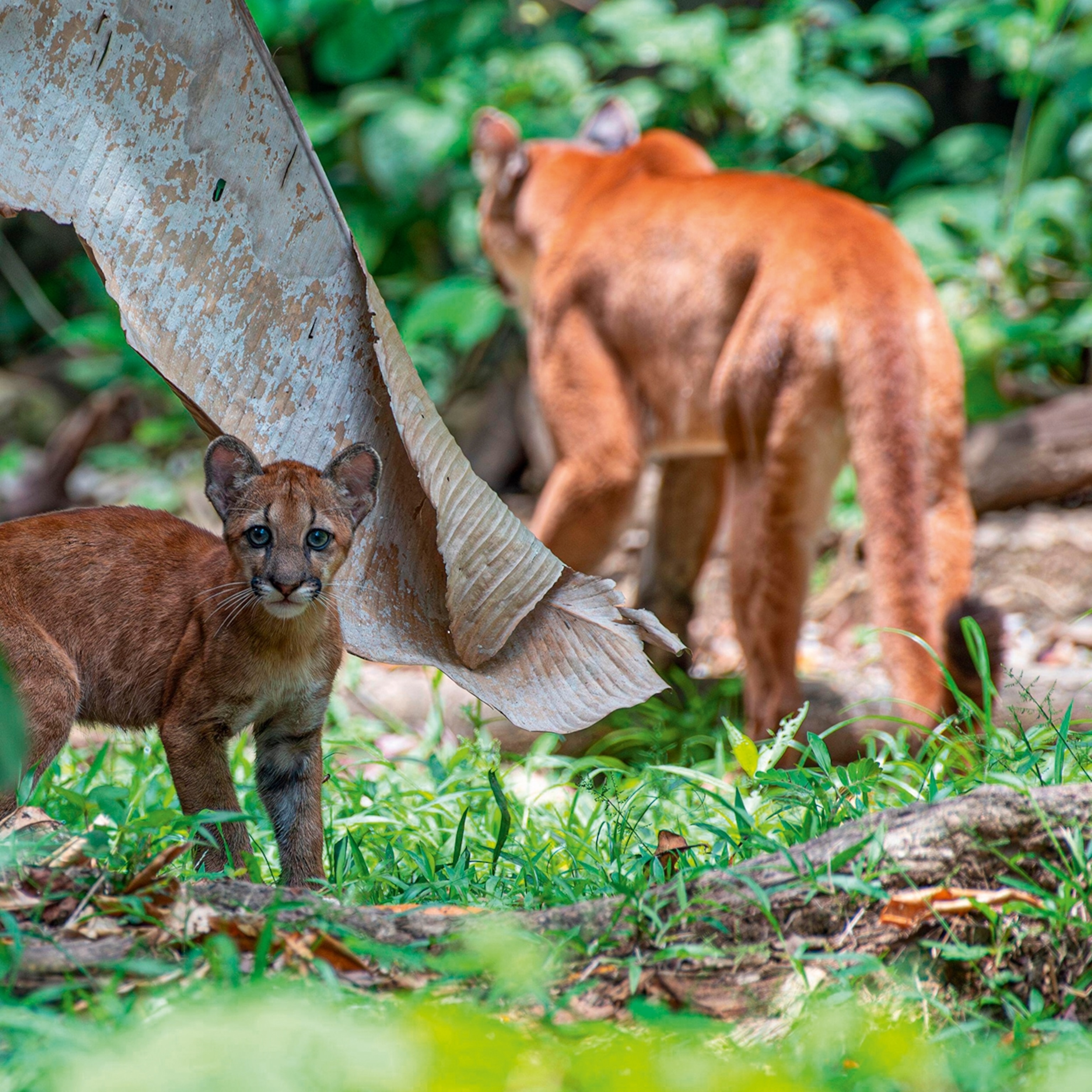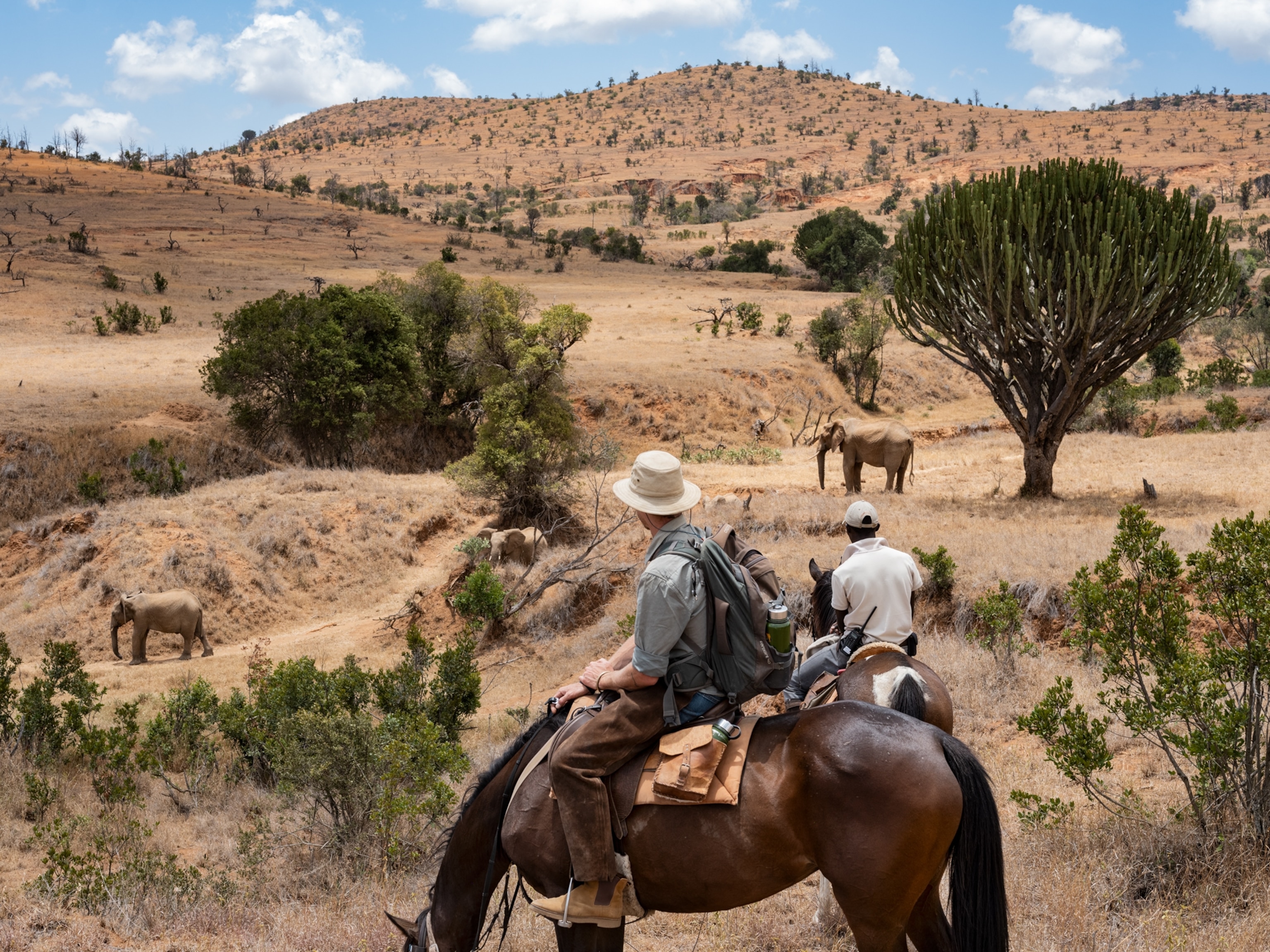
Madagascar’s tourism drought could fuel another crisis
Isolation helped establish the island’s biodiversity. Now its remoteness poses a threat to lemurs and other wildlife.
A cruel irony hangs over Madagascar, a massive island about 250 miles off the east coast of Africa. In this wonderland of biodiversity and bucket-list destination for travelers, the very thing that has defined it—isolation—could be its undoing.
Nearly the size of Texas, and split off from the African mainland some 180 million years ago, this Indian Ocean island is a world apart. It’s the only place on the planet to find lemurs in the wild, and 90 percent of its plants and animals are endemic.
In mid-March, Patricia Wright was in Madagascar, where the renowned primatologist travels six times a year, to oversee the transfer of a dozen greater bamboo lemurs from a rice field into the rain forest. Village farmers had grown agitated over the critically endangered creature eating their crop.
“It was a rescue operation,” says Wright, who runs the state-of-the-art Centre ValBio research station on the edge of Ranomafana National Park, a protected lemur habitat on the eastern coast of Madagascar that she helped establish in 1991.
Just before the expedition launched, the coronavirus hit. Flights in and out of Madagascar came to a grinding halt, and the Malagasy government restricted travel between cities. Wright caught the final flight off the island on March 20—the day Madagascar confirmed its first three COVID-19 cases—and has spent the ensuing weeks across the globe in New York, where she is a professor at Long Island’s Stony Brook University.

“We sent a message to the village to be sure they understood why we couldn’t come,” she says. “They said they would continue not to hunt [the lemurs] and wait for us to come. But when can we go? Everything’s locked down.” The scenario underscores the challenges facing Madagascar’s biodiversity in the time of COVID-19.
The role of tourism
Madagascar frequently ranks among the 10 poorest countries in the world, according to the International Monetary Fund. Last year, more than 375,000 tourists visited Madagascar, with annual tourism dollars reaching nearly $900 million. While those numbers remain modest, consider that the average traveler spends around $3,000 in a country where 75 percent of its 25 million inhabitants live on less than $1.90 a day.
“Madagascar is starting to get on the lips of people who are looking for new destinations in Africa,” says Bruce Simpson, the CEO of Time and Tide, a collection of luxury safari camps that opened Madagascar’s first five-star eco-lodge, Time and Tide Miavana, in 2017 on the private island of Nosy Ankao. The lodge’s high nightly rates help fund a project to protect crowned lemurs and support local seaweed farmers, providing a lucrative alternative to overfishing.
But no flights mean no guests at Miavana or the country’s other eco-lodges and resorts. The lack of visitors has emboldened animals around the island to start emerging from their hiding places, says Maholy Ravalohariminitra, a National Geographic Photo Ark EDGE fellow who is focused on conservation of the Madagascar big-headed turtle. In places like Andasibe-Mantadia National Park, indri lemurs—as well as snakes, frogs, birds, and more—are venturing out.
While wildlife taking back terrain plays well on social media, the reality threatens to deliver a devastating blow here. “Tourism offers indirect protection—more eyes and ears within protected areas keeps illicit activities at bay,” says Rio Heriniaina, another Photo Ark EDGE fellow, working to protect the indri.
(Related: This town in Costa Rica is facing an eco-tourism crisis.)

Conservationists have been hoping that rising tourism can help stem the tide of illegal deforestation, which could wipe away the last of the island’s rain forests by 2080, according to models published last year in the journal Nature Climate Change. Habitat loss and hunting for meat are the biggest threats to lemurs.
Desperate locals turn to exploiting natural resources, says Steve Goodman, an American conservation biologist who has lived in Madagascar since 1988.
“The tourism industry has come to zero plus zero,” Goodman says, referring to the sudden freeze in cash flow for the tourist economy. “This has an enormous impact, both on a high level but also for the local guides that need to feed their families.”
Epidemiologist Christopher Golden, a National Geographic fellow who’s been doing environmental and public health research in Madagascar for 20 years, echoes that concern. The lack of tourism, he says, is “weakening and destabilizing people’s incentives to maintain protected areas.”
When disaster strikes here, Malagasy farmers tend to revert to slash-and-burn agriculture in the forests—torching trees to create ash fertilizer for the soil—while local fishers employ unsustainable methods on the coast. Another negative consequence of the pandemic is that visiting researchers and students, who provide practical and financial support to the island’s conservation efforts, can’t get here.
A history of outbreaks
Just over 370 COVID-19 cases have been confirmed in Madagascar, with only two reported deaths, to date. Testing is limited, however, and President Andry Rajoelina’s controversial promotion of an untested herbal tonic, called Covid-Organics, complicates the matter.
For now, the more immediate public health threat detected by Golden and his team of data analysts is a flare-up of malaria—a behavior-induced byproduct of the coronavirus. “When COVID arrived here,” he says, “many people left the villages and moved into their remote hamlet homes.” High season for malaria typically occurs in April—a month when people wouldn’t normally spend as much time in the forest.
These issues are but the latest in Madagascar’s tumultuous history, which ranges from political upheaval—most recently, a nine-month-long coup d’état in 2009—to recent bouts of bubonic plague and cholera.
“We have lots of experience with very ancient diseases,” says Sonja Gottlebe, a German-born, Malagasy-raised travel entrepreneur who has run her Boogie Pilgrim tour company here for more than three decades.


Yet the emergence of COVID-19 has locals like Gottlebe rattled. For one thing, she worries about its impact on the European visitors that keep her business afloat. Typically, 60 percent of foreign arrivals are French and Italian, she says, two countries hit hard by the pandemic.
Not everyone fears the worst, though. “If our [coronavirus] numbers remain relatively low compared to other countries, I’m confident this will be a good thing for the rebound of tourists,” says Haja Rasambainarivo, the Malagasy co-founder of Asisten Travel, whose company has seen about a hundred rescheduled or canceled trips so far. “Madagascar is used to dealing with crises, which makes me believe we will be resilient to this.”
Eyes on the horizon
While the world waits to see what will happen next, travel operators and researchers in Madagascar are doing what they can. After giving up the rent on her office in early May, Gottlebe has relocated operations to a spare bedroom in her home and pivoted her company’s attention toward domestic travel, a nascent industry here.
Time and Tide’s Simpson hopes the global pause will recalibrate travelers’ motivations: “I’ve got to believe that, with all the doom and gloom, this could kickstart people into being more responsible and to travel to environments like Madagascar, where tourism could be the only thing that protects it.”
(Related: Will the sustainable travel movement survive coronavirus?)
Back in the Ranomafana rain forest, Centre ValBio staffers have been hard at work sewing masks, making soap, and setting up hand-washing stations at the local markets, stocked with sanitizer made from moonshine they purchased from village elders. From New York, Wright has been developing a series of fee-based virtual tours to help pay her staff—and, she hopes, keep her 35-year-long efforts to conserve lemurs from going, as she says, “down the drain.”
“This is difficult for everybody in the world,” Wright says, “but lemurs are only found in Madagascar, and once they’re gone, they’re gone.”
You May Also Like
Go Further
Animals
- Octopuses have a lot of secrets. Can you guess 8 of them?
- Animals
- Feature
Octopuses have a lot of secrets. Can you guess 8 of them? - This biologist and her rescue dog help protect bears in the AndesThis biologist and her rescue dog help protect bears in the Andes
- An octopus invited this writer into her tank—and her secret worldAn octopus invited this writer into her tank—and her secret world
- Peace-loving bonobos are more aggressive than we thoughtPeace-loving bonobos are more aggressive than we thought
Environment
- This ancient society tried to stop El Niño—with child sacrificeThis ancient society tried to stop El Niño—with child sacrifice
- U.S. plans to clean its drinking water. What does that mean?U.S. plans to clean its drinking water. What does that mean?
- Food systems: supporting the triangle of food security, Video Story
- Paid Content
Food systems: supporting the triangle of food security - Will we ever solve the mystery of the Mima mounds?Will we ever solve the mystery of the Mima mounds?
- Are synthetic diamonds really better for the planet?Are synthetic diamonds really better for the planet?
- This year's cherry blossom peak bloom was a warning signThis year's cherry blossom peak bloom was a warning sign
History & Culture
- Strange clues in a Maya temple reveal a fiery political dramaStrange clues in a Maya temple reveal a fiery political drama
- How technology is revealing secrets in these ancient scrollsHow technology is revealing secrets in these ancient scrolls
- Pilgrimages aren’t just spiritual anymore. They’re a workout.Pilgrimages aren’t just spiritual anymore. They’re a workout.
- This ancient society tried to stop El Niño—with child sacrificeThis ancient society tried to stop El Niño—with child sacrifice
- This ancient cure was just revived in a lab. Does it work?This ancient cure was just revived in a lab. Does it work?
- See how ancient Indigenous artists left their markSee how ancient Indigenous artists left their mark
Science
- Jupiter’s volcanic moon Io has been erupting for billions of yearsJupiter’s volcanic moon Io has been erupting for billions of years
- This 80-foot-long sea monster was the killer whale of its timeThis 80-foot-long sea monster was the killer whale of its time
- Every 80 years, this star appears in the sky—and it’s almost timeEvery 80 years, this star appears in the sky—and it’s almost time
- How do you create your own ‘Blue Zone’? Here are 6 tipsHow do you create your own ‘Blue Zone’? Here are 6 tips
- Why outdoor adventure is important for women as they ageWhy outdoor adventure is important for women as they age
Travel
- This royal city lies in the shadow of Kuala LumpurThis royal city lies in the shadow of Kuala Lumpur
- This author tells the story of crypto-trading Mongolian nomadsThis author tells the story of crypto-trading Mongolian nomads
- Slow-roasted meats and fluffy dumplings in the Czech capitalSlow-roasted meats and fluffy dumplings in the Czech capital






